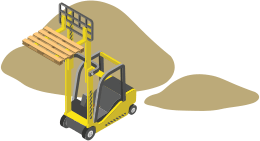When it comes to webpage loading speed here’s a right-on-the-money quote from the movie Postcards from the Edge, “Instant gratification isn’t soon enough.” If a page doesn’t load in the first 1 to 2 seconds or less, your users will be ready to move on to the next website to find what they’re looking for. Maybe even to your competitor in the same market. Instant gratification means “right now!”…”not a second to lose!”
…immediately!
Think of it this way. It took you longer than two seconds to read that first paragraph. Do your website pages take that long to load? Or longer?
There are a few good reasons why a user leaves or “bounces” from your site quickly.
A bounce rate is the percentage of people who land on a page and leave without performing any specific actions, like making a purchase, contacting your company via email, filling out and returning a form, or calling you.
A bounce can occur when your content is poor, if a user has previously had a bad experience either on your website or with your products or services, if your navigation system is inaccessible, or if your website design is counterintuitive. It can also occur when the wrong target audience lands on your page. That happens because of how your page is advertised online to potential customers. Misleading title tags or meta descriptions translate to poor customer targeting.
And then there’s page loading time. Loading time may be the most important aspect of your website functionality. According to a user research study conducted by Google, “the chance of a user bouncing from a particular site increased by 32% when a page load time went from one to three seconds, and by 90% when the page load time went from one to five seconds. If a page takes up to 10 seconds to load, then the chance of a bounce increases to 123%.”
So, 32%, 90% or 123% is a lot of bouncing! Like we said: “Instant gratification isn’t soon enough.” If the right pages don’t load literally within seconds, the chances of users leaving your site increases significantly. That also means that the chances of you engaging a potential customer drops drastically.
In addition, page speed matters because it has a direct influence on your potential customer’s perception of your brand. A slow page load can make them feel that your company or business is unreliable or unprofessional. And it’s the quickest way to hurt your ability to drive user engagement and sales conversions because you may have also turned some existing customers away.
Solving Issues
So, how do you solve these issues? First, before anything else, you need to make sure your title tags and meta descriptions are correct and consistently updated whenever you change or refresh your content. Make sure that potential customers are pointed in the right direction—your direction—by having the precise title tags and meta description.
Now, let’s address load speed and uptime. If your webpages are sluggish or nearly impossible to load in 1 to 2 seconds, you not only get a high user bounce rate, but you also go down in the SEO rankings. Speed is important to gain rankings for mobile, desktop or laptop searches.
A website that loads seamlessly and is optimized for speed on all devices, not only boosts your search engine rankings, but it also enhances the user experience or UX. You literally have 1 to 2 seconds to grab their attention, entice them to stay on your website, and keep them traveling down the road to a sales conversion.
For comparison, a driver on a nearby highway has 5 to 10 seconds to view your billboard design, read any text, and comprehend the message. A radio station listener has 30- to 60-seconds to hear and engage with a radio commercial, and even if they change the channel, that takes 5 to 10 seconds to accomplish.
Step One
Of course, you don’t know where you’re going if you don’t know where you are (or have been). Testing how your website is currently performing is easy. And there are quite a few free tools out there to choose from. Some tools test just website or page speed. Others test for speed, accessibility, performance, and SEO. Others do even more.
Google Analytics, for example, gives you “Site Speed” access and provides you with your website’s overall speed performance, rather than just assessing the speed of one page. Some other tools can give you page loading speed and supply details of what exactly is slowing your site speed down.
It just takes some research and some specific defining of your needs, but site testing tools are available and easy to use. You just need to get online and do your homework.
Let’s Increase Load Speed
Once you know what your existing page load speed is, you can start chipping away at the time it takes to fully load your website. Remember every second counts. Here are a few tips on how to improve your load time:
1. Reduce Server Requests
Your website may be requesting too many resources from the same server at the same time. This slows the page load down, especially if you’re trying to upload unoptimized photos or images. Ideally, you should have less than 50 individual pieces of content needed to display your entire webpage. And somewhere around 25 pieces is an even better number for optimal load time.
2. Upgrade Your Hosting Service
Your hosting service most likely has dozens of website clients on their servers. That means that there are many websites “asking” to have their content and images loaded at the same time. If there are too many trying to load all at once, every website slows down.
Look for a performance-optimized hosting provider. Hosting providers play a major role in your website’s management and performance. That includes its page speeds.
3. Reduce Load Time to Increase Uptime
Uptime is defined as: “a measure of a website’s availability to its end users.” It’s the time your website is able to fully function, grow traffic, SEO rankings, and of course, drive and complete sales.
Here are a few other things you can do to speed things up:
- Remove unnecessary plug-ins.
- Replace large file plug-ins with smaller, more streamlined ones.
- Remove images that add nothing to your call to action.
- Compress remaining images. Resolution may be slightly less, but this can increase load time and still look fine on mobile devices or computer screens.
- Use smaller jpg images rather than png images.
- Delete unnecessary videos.
- Enable lazy loading so that website content doesn’t load until the user or browser actually needs it.
- Use content caching.
- Reduce third-party requests.
By improving your website performance optimization, by increasing page load speed and uptime, you have a real opportunity to impact your targeted users. It’s important to remember that your website performance has a measurable effect on conversion rates.
Studies consistently show that a fast page loading speed of 1 to 2 seconds, results in a much higher conversion rate. The quicker the page loads, the more likely a user or potential customer is to perform the action needed to contact your business, request more information, or complete a sale.
When it comes to page load speed, a 1-second delay reduces your chance of conversion by 7%. Short webpage load times are key for the optimal user experience, conversion rates, SEO rankings, uptime, and the overall success of your online business.








